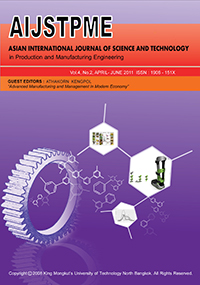Application of Dilatometry Testing and FE Simulation for Hot Forging Process
Main Article Content
Abstract
Hot forging is a conventional forming process at elevated temperatures that is frequently used to produce bulk parts and components. By designing such hot forming processes FE simulations have been increasingly used. In this work, deformation behaviour of two common medium carbon steels was characterized at their hot-working temperature region by means of a deformation dilatometer machine. The effects of temperature, strain rate, and dynamic softening with respect to the recovery and recrystallization of material on the compressive flow stresses could be studied. In addition, phase transformation during continuous cooling after upsetting at high temperature was investigated for these steels. The flow curves and the Deformation Time-Temperature-Transformation (D-TTT) diagrams were determined using the determined experimental data. Subsequently, these material data could be applied for numerical FE simulations of industrial hot forging processes in order to optimize the parameters in the process. With a cellular automata (CA) model the calculation of microstructure evolution, dynamic recrystallized (DRX) grain size, and hardness of any selected areas in the forged parts after controlled cooling is possible
Article Details
How to Cite
Uthaisangsuk, V., Apichat, S., & Chettaisong, T. (2013). Application of Dilatometry Testing and FE Simulation for Hot Forging Process. Applied Science and Engineering Progress, 4(2), 29–35. retrieved from https://ph02.tci-thaijo.org/index.php/ijast/article/view/67368
Issue
Section
Technology


